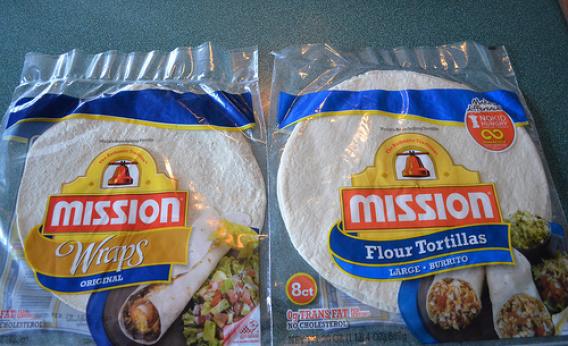Price discrimination—the effort to charge customers exactly their individual subjective marginal utility—is one of the more fascinating elements of the business world. And this find by John Scalzi is fascinating example of it. A Mission flour wrap and a Mission burrito-sized flour tortilla are the same thing. And yet the package of wraps costs 26 cents more than the package of tortillas and contains two fewer wraps/tortillas.
Lisa Wade comments:
Mission has figured out that they can sell their product for a higher price if they name it “wraps” (or, at least, they think they can). Let’s crowd source this. After all, Mission is counting on our collective network of ideas (and a failure to notice the count difference) to push us towards the wraps instead of the tortillas. What does “wraps” make you think of? What else is that word linked to that might make a person prefer it? Would you feel different bringing home a package of wraps? In other words, what ideas, lying just beneath the surface, are they tapping into with this marketing strategy?
I’m not sure there is an actual strategy here. In terms of efficient pricing, one smart strategy for a supermarket would be to arbitrarily slap different prices on different identical packages. Thrifty people will spend a little time hunting around for the best price, and people who aren’t price sensitive will just grab whatever and stick it in their bag. Stores don’t do that because people would get angry and end up in arguments with cashiers. But they typically achieve something similar with coupons. People who care about finding a bargain get a bargain, and people who don’t care pay a higher price.
But any time you have an identical product that can plausibly be put into two different packages, applying the arbitrary price differential strategy makes sense. Flipping the wraps and tortillas might produce the same result. Some people will buy the more expensive package without noticing, while thrifty people will buy the cheap one and congratulate themselves. The existence of store brands of milk and such is a version of this strategy, but labeling an identically branded Mission product two different ways is a great pure play. Are there other products that can be sold like this under two different names? The best examples I can think of come from the exciting world of canned beans where you could have a chickpeas/garbanzos price wedge or a great northern/navy bean differential.
